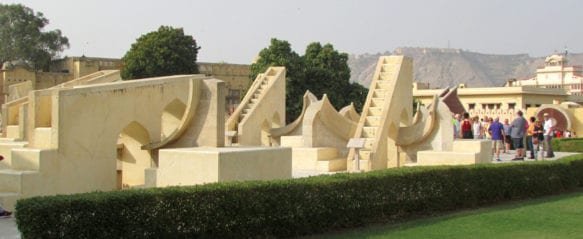
Jantar Mantar in Jaipur
About Jantar Mantar in Jaipur
The name Jantar Mant in Jaipur is derived from Jantar (yantra, Sanskrit: यन्त्र, “instrument, machine”), and mantar (from mantrana, Sanskrit: मन्त्रण, “consult, calculate”). Therefore, Jantar Mantar literally means ‘calculating instrument’.
When Jai Singh began constructing the Jantar Mantar in Jaipur is unknown, but several instruments had been built by 1728, and the construction of the instruments in Jaipur continued until 1738. In 1735, when construction was at its peak, at least 23 Astronomers were employed in Jaipur, and due to the changing political climate, Jaipur replaced Delhi as Jai Singh’s main observatory and remained Jai Singh’s central observatory until his death in 1743. The observatory lost support under Isvari Singh (r.1743-1750) because of a succession war between him and his brother.
9 AM – 4:30 PM
Gangori Bazar, J.D.A. Market, Pink City, Jaipur, Rajasthan 302002
Misra Yantra at Jantar Mantar in Jaipur

Misra yantra is a comparatively small instrument formed by way of the mixture of five devices that measure the longest and shortest day of the year through the use of its southwest pillars. This instrument can predict the specific midday time of no longer only Delhi but all other cities of the world irrespective of their distance from Delhi. Each stone made of marble is exactly curved and perfectly aligned with its neighbor.
Digamsa Yantra jantar mantar of jaipur
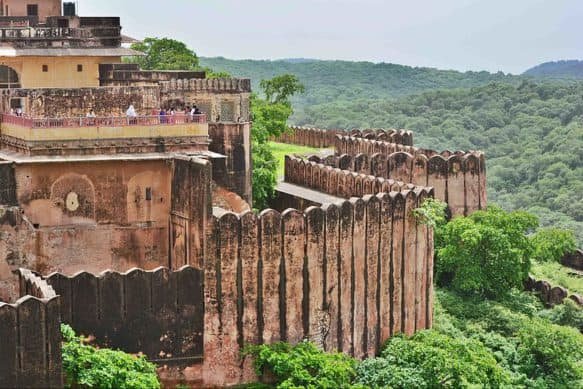
Digamsa yantra used to be developed to help Rama yantra in proving accurate azimuthal readings and so, its format is exceptionally much less complex than Jai Prakash and Ram yantra.Digamsa Yantra is essentially a round drum-like shape in the center surrounded by using two round walls, 2nd circular wall having twice the height of the first circular wall(height equal to the central drum). Azimuthal scales have been engraved on top of each pillar and circular walls (made of marble protecting the complete round structure of the pillar or wall). Two wires, one in a north-south direction and different in an east-west path have been suspended from the top of the second round wall. These two wires intersected at the actual middle of the central pillar.
Jai Prakash jantar mantar of jaipur

The Jai Prakash can also nicely be Jai Singh’s most complex and complicated instrument. It is based totally on ideas dating to as early as 300 B.C. when the Greco-Babylonian astronomer Berosus is said to have made a hemispherical sundial. The smaller Kappala Yantra at Jaipur is an example of such a dial. See the time-lapse video to see how the Kappala Yantra tracks the sun’s movement. Scales aligned to four compass instructions have been inscribed on the open pinnacle of the hemisphere. The horizontal base under-represents the horizon of the observer. Crosswire strings secured at the 4 compass instructions preserve a steel ring at the point of its intersection. Scales aligned to four compass instructions have been inscribed on the open pinnacle of the hemisphere.
Rama Yantra jantar mantar of jaipur

Ram yantra is made up of two large cylindrical constructing with an open top along the north-south axis. The pillar and walls are of equal height, which is additionally equal to the radius of the structure. The ground and indoor floor of the walls are inscribed with scales indicating angles of altitude and azimuth.
Samrat Yantra Jantar Mantar of Jaipur
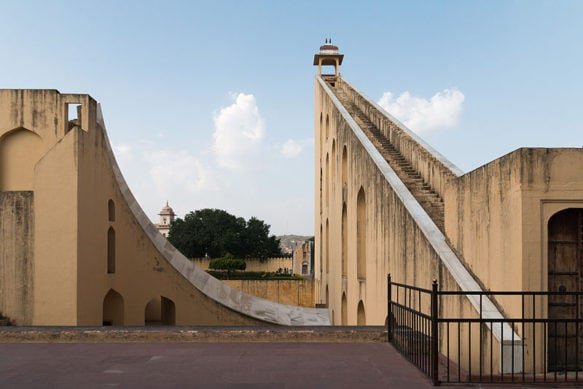
The Samrat Yantra, sometimes known as “Supreme Instrument” is an equinoctial sundial of vast proportion. Two Although one of the easier instruments, and now not too one-of-a-kind from sundials which had been developed lots of years earlier, the Samrat Yantra is essential due to the fact it measures time to a precision that had in no way earlier than been achieved. The Samrat Yantra at Jaipur, for example, is capable of measuring time to an accuracy of two seconds.
Rashi Valaya Yantra Jantar Mantar of Jaipur
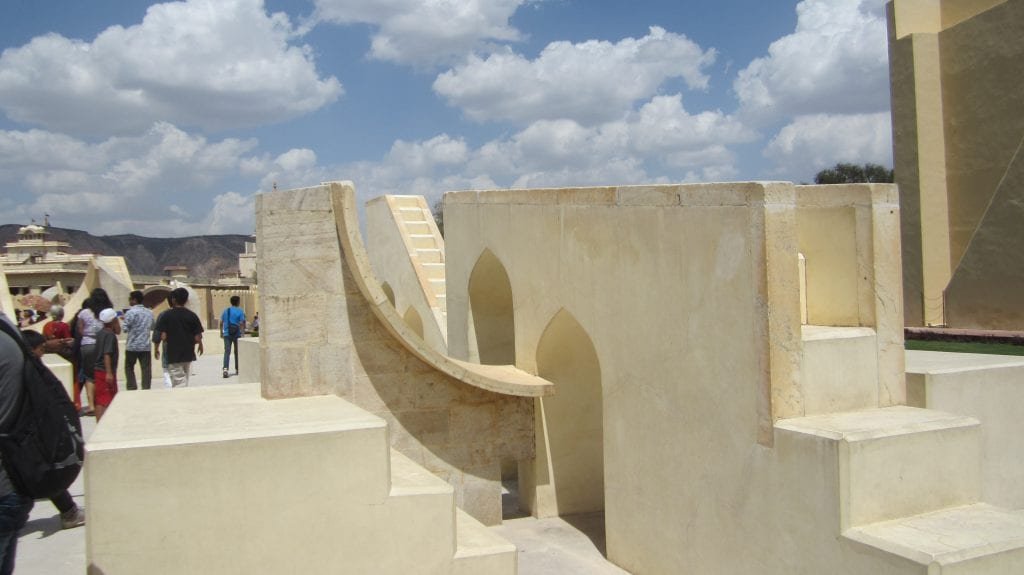
12 gnomon dials that measure ecliptic coordinates of stars, planets, and all 12 constellation systems. As the title suggests, these yantras have been used for predicting horoscopes (Rashi). Construction is very similar to Samrat yantra besides from the slope of the gnomon for every of the twelve Rashis(Zodiac signs). Originally meant to be built symmetrically on a platform representing the horizon, symmetry used to be now not particularly due to the southward shift of Gemini and Aquarius yantras with recognize to Leo and Sagittarius yantras.
Unnatamsha Yantra Jantar Mantar of Jaipur
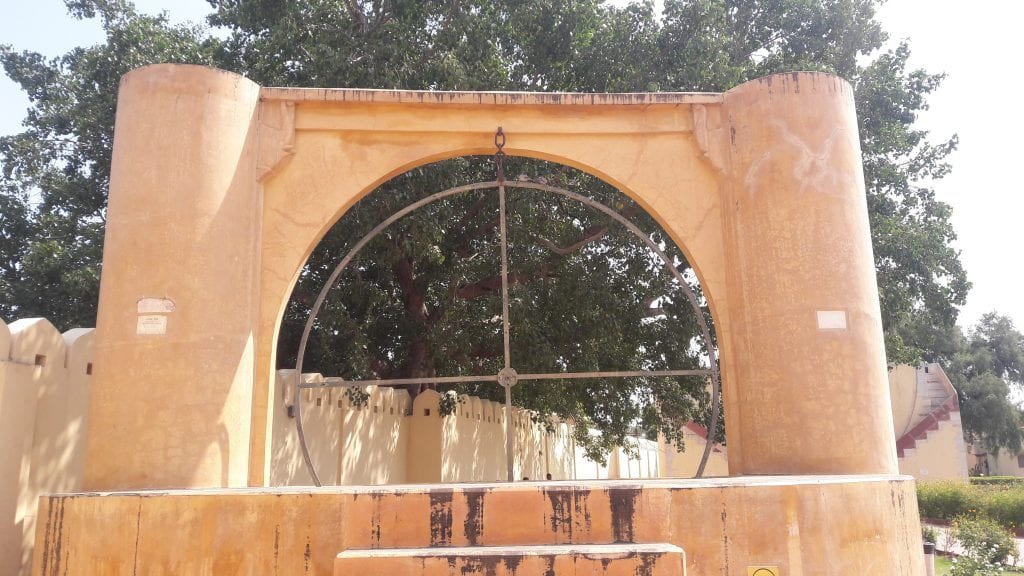
A metallic ring is divided into 4 segments with the aid of horizontal and vertical lines, with a hole in the middle; the role and orientation of the instrument permit measurement of the altitude of celestial bodies.
Must Read:- WTP in Jaipur
